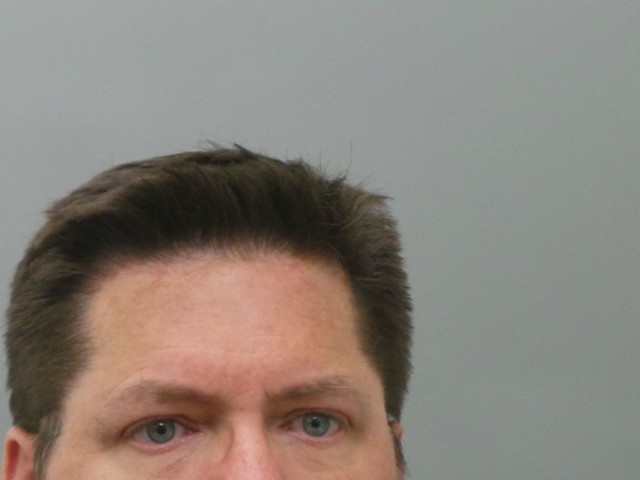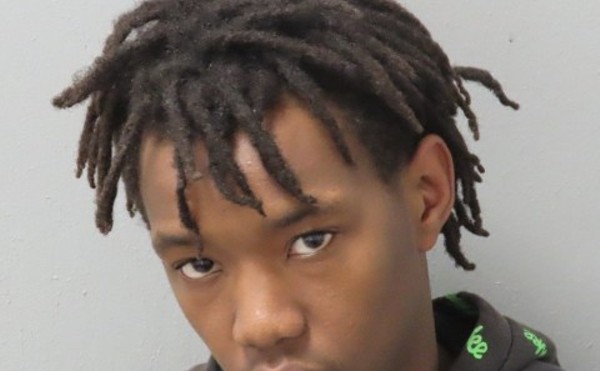The game is over, but only a few people know.
Dr. Junaid Syed, just back to south St. Louis after a psychiatry conference in Miami, is in no hurry to inform his critics they have won. He hasn't even told his staff yet. For now, it's only the ghost of his plans to open the third-largest federal halfway house in the nation near Cherokee Street keeping his enemies awake at night – the bid is dead.
"It is hard," Syed says. "It is very hard, but life goes on."
The 46-year-old psychiatrist immigrated to St. Louis from Pakistan nearly two decades ago to study at Washington University. After graduating in 2002, he took a job as chief psychiatrist for the St. Louis County Jail but left three months later amid what he says were budget concerns. He hopped to St. Alexius Hospital in south city and has been there ever since. His office is on the Jefferson Street campus, just across the parking lot from an empty wing where he had hoped to house 161 newly released federal inmates.
Syed had imagined a clean, industrious operation with a computer lab, fitness center and the benefits of proximity to a hive of medical services at St. Alexius. The Bureau of Prisons counts on a network of halfway houses across the country to help ex-cons ease back into the world. The idea is to teach the ex-offenders how to get and keep a job, manage their new freedom and avoid the behavior that landed them in prison.
One of the main selling points in Syed's pitch would be access to psychiatric care. After years of treating serious psychosis among the poor, Syed has come to see mental health problems as the root of much of the poverty and crime swirling through the city. Take away the pain of a troubled mind, he reasons, and you can pull a person out of chaos. Crime would theoretically fall as a result.
"We can do it scientifically," he says.
Somewhat naively, Syed had suspected his most difficult task would be convincing the federal Bureau of Prisons he could do a better job than Dismas House of St. Louis, which pioneered the halfway house model in the United States and currently has the contract to hold ex-cons in north city.
He hadn't counted on the battle he'd face from worried neighbors, local politicians and a city building department that refused to even consider his application.
The opposition cut him off at the knees before the competition even began.
Syed was a phantom to most people along Cherokee Street. He didn't drink his coffee at Foam or the Mud House. He wasn't part of any of the business associations or community groups whose members prize a we're-in-this-together attitude as they remake the once-frightening corridor into a home base for the city's creative class.
Alderwoman Cara Spencer, who harnessed the growing power of the neighborhood's change-hungry new guard last year to take out a twenty-year incumbent on the city council, says she begged Syed for months to bring his plan to a community meeting. Any meeting. He eventually agreed but didn't show, standing up a crowd of more than 100.
Syed says he had to leave town unexpectedly when a loved one suffered a heart attack, but that kind of no-show doesn't play along Cherokee anymore. Split between city wards and neighborhoods, people who live and work along the once-fractured thoroughfare have marshaled new political, economic and cultural muscle, turning their stretch of south St. Louis into a destination despite little help from the city's traditional power brokers.
"We don't have an apathetic community down here at all," Spencer says.
Syed finally met privately with a small number of business owners this fall in hopes of winning over a few influential stakeholders. They were unimpressed and worried his project could potentially flood the fledgling district with ex-cons, undoing years of hard-won progress.
Developer Jason Deem was one of five people at the meeting. An early investor in Cherokee's transformation and thirteen-year resident, he says he came away from the sit-down more suspicious than ever. That Syed had worked for more than a decade just a block away at St. Alexius and didn't seem to have any community ties outside his practice was particularly damning.
"He's not vested in this neighborhood," Deem says. "He hasn't taken the time to get to know anyone in this neighborhood."
The problem isn't a halfway house, and this isn't a case of "not in my backyard" whining, Deem insists. He believes the problem is Syed's proposal for what critics had begun to call a "halfway warehouse." Only two facilities in the country – one in Illinois, the other in Georgia – have more than the 161-bed maximum that Syed's project would include, according to Bureau of Prison numbers.
The neighborhood's progressive residents would and do support small-scale treatment centers run by nonprofits, Deem says, but they've seen no details to reassure them that such a large new facility would be managed safely.
"Let's be honest," Deem says, "if this project is not well run, it does have the potential to increase crime significantly, and that's the No. 1 concern people have around here."
When Syed scheduled a community meeting of his own for January 5 in a St. Alexius auditorium, Deem spread the word on Facebook, comparing the psychiatrist's proposal to the for-profit "private prison racket" in the United States. Spencer – who had spent time as a community networker for Deem's co-working space, Nebula – also reached out to her contacts. They noted Syed had enlisted the help of the Board of Aldermen's former attorney, David Sweeney, seen as a political insider, to help push the proposal. He was also suing the city, supposedly to avoid a permitting requirement to give the public a say.
More than 150 people packed the auditorium on the night of the meeting, crowding three and four deep along the walls once the seats were filled.
Syed says he also put the word out, mailing 7,000 notices. Yet that action didn't endear him to the locals; people were angry that they'd only received the mailers that morning.
"I think that had this been handled a little differently and you asked from the community what they want and how to move forward for support, we may have – and I only can speak for myself – I may have felt a little more comfortable in seeing how we can make this work for our community," LaTasha Jones, the principal of Carnahan High School of the Future, told Syed. "But because that did not happen, I think this is why you're received with so much opposition."






